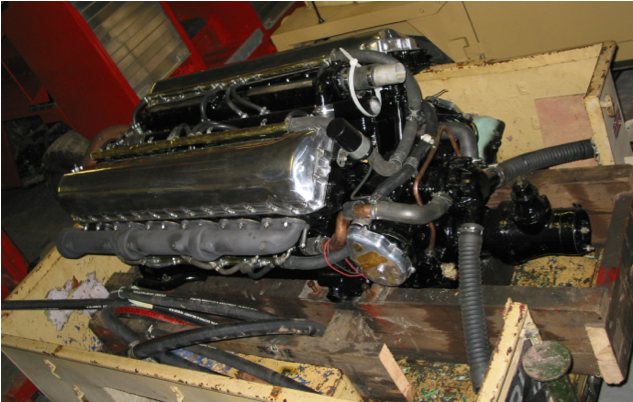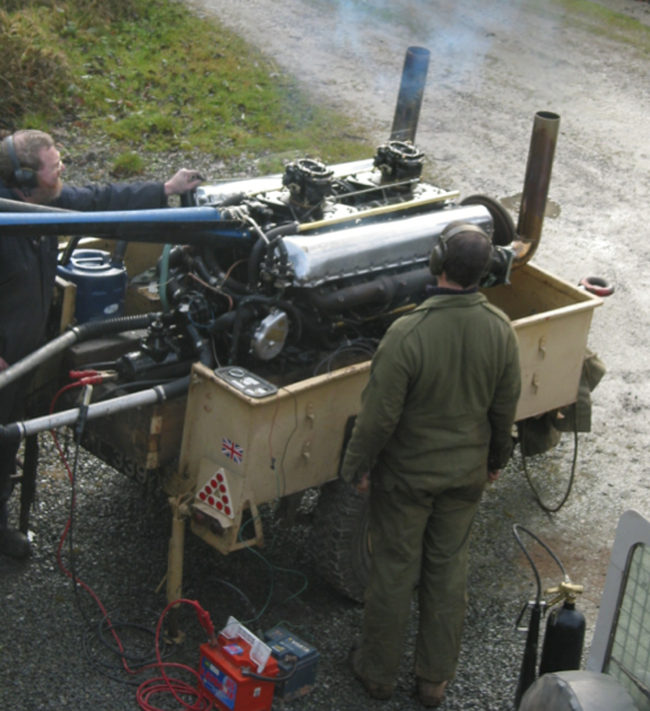This article is more than 1 year old
Hi-torque tank engines: EXTREME car hacking with The Register
Bentley found in a hedge gets WW2 lump insertion
Behold my saviour: the MIGHTY CENTURION'S SHAFT
The eventual answer I found (and I’m sure there are many others) is to buy the burnt-out clutch from a Centurion tank.

The Meteor engine following 100 hours of prep work, photo: Mark Whitehorn
This whole assembly weighed about three hundredweight (150ish kg) but all you want is the splined shaft, so you dismantle the clutch and throw away 2.9 cwt. This gives you a shaft that is strong enough to take the torque and also fits neatly into the splined hole in the crank. You then machine the non-splined end of the shaft down and machine a new bit that bolts to that end. This new bit has holes so that it can be bolted to the flywheel.
But how do you make sure that the shaft spins true and doesn’t lash around? Answer: the two bits of the shaft not only bolt together, they can be bolted together around a bearing.
So, how do you ensure that the shaft and the engine don’t move relative to each other? You bolt the engine directly to the chassis and add a cross-member behind the engine to which the bearing, shaft and flywheel assembly can be bolted. As long as you align them properly (a non-trivial task in practice that involves a great number of shims) they both turn happily together. The additional joy is that the bearing you have chosen not only keeps the shaft spinning true but also takes the thrust from the clutch. Robert is now your mother's brother.
You may be thinking “when the engine heats up it will expand and push the shaft.” True, but it is a splined shaft, so it can slide slightly in the hole. We calculated the expansion and (hopefully) allowed for it.

Engine test run - note the fire extinguisher. Photo: Mark Whitehorn
Then there was the carburation. The original assembly used two updraft carburettors and an induction system of Byzantine complexity. When I tell you that the air turned through six right angles during the induction process, you can see why we felt it could be improved. We fabricated an entirely new set of plenum chambers and fitted a pair of 48 NNIP Solex downdraft carburettors, which reduced the number of right angle turns to two.
The car is still a work in progress so there are still many interesting problems to solve. Hacking cars is a delightful mixture of calculation, in order to decide how to proceed, and then getting your hands dirty doing it.
In my more philosophical moments I have pondered the common link between hacking code and cars. For what it’s worth, I think it is that all true hackers (no matter how that trait manifests itself) love problem solving. Whether those problems are manifest in code or engineering is essentially immaterial. ®
